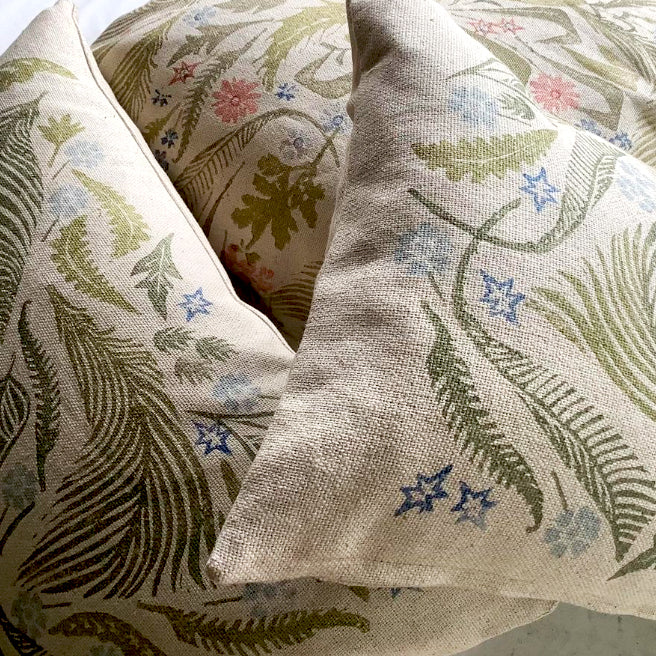Meet The Maker: Jenny Stringer

I am Jenny Stringer, and I have been block printing fabrics (and sometimes papers) for the last thirty years; as and when possible.

How did you start your creative career?
I was an archaeological illustrator after a brief museum career, and worked with a team of archaeologists. Afterwards, I freelanced from home, specialising in glass and ceramics. I also experimented with wood engraving which needs a similar level of exactitude. This disciplined approach was a distinct disadvantage when I went over to fabrics: I had to think big and bold, but also be accurate in registration.


Why Printmaking?
I had wanted to be a potter, but found it was not only difficult to combine with domesticity, but it was also restricted for colour and pattern. So I joined a different class at Stroud College - textile printing - and I was hooked! I have been doing it ever since, whenever time allows.

Where do you work?
Like many others, I started on the kitchen table; I was proud to be able to clear my stuff away for the next meal in seven minutes flat. I now have a workroom-cum-sitting room, with a long padded printing table in the bay window. It also has a side table for drawing and for cutting rubber or lino blocks. My colours (applied with a recycled washing-up sponge from a kitchen plate), I pull along on a tea trolley as I go. Each width is ironed once printed, to fix the dyestuff.

There is no typical day in the workroom. I could be leaning against the radiator, thinking, or playing around with cut out shapes, or mixing colours. Or I could be in in full production mode, with the material being printed across the long table, rolling from one broom handle to the other via a coat rack or a towel rail.

How do you design your patterns?
I sometimes start by cutting shapes out of coloured paper (a liberating exercise!) or with a drawing. I transfer the drawing to the block by reversing the tracing paper onto the block and rubbing the back with a bone paper-folder, or the bowl of a spoon. The design then prints the right way round, which may be useful; and the design on paper can then be used to visually double the image, in the same way as a mirror. Another invaluable tool, since pattern is all about repetition.


Where can we see your work? Where do you sell?
Selling is definitely not my forte, and nor is technology; but I do love teaching. I believe that the incredible versatility of block-printing gives infinite possible entries into digital printing at one end of the scale, and producing attractive designs (by those who claim not to be artistic) at the other.

I teach in the workroom, from ages four to eighty. I sometimes teach elsewhere, and sell either to visitors or on commission. I very much enjoy posting on Instagram, which I find gives a nice sense of community and support.

What inspires you?
As for inspiration, I find it everywhere!

Do you have an open studio soon that we can tell people about?
My workroom is always open to those who are really interested, and also when the house Whittington Court is open to the public for two fortnights a year.
Follow Jenny on Instagram or visit WhittingtonCourt.co.uk for more information on Jenny's studio and workshops.
